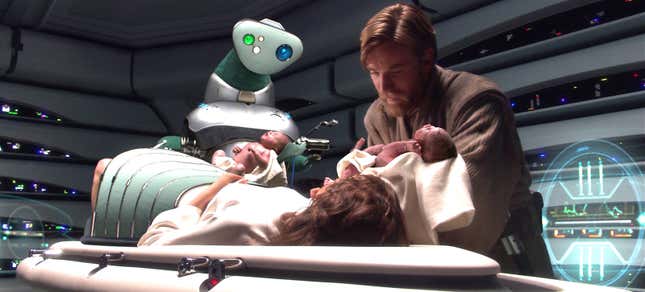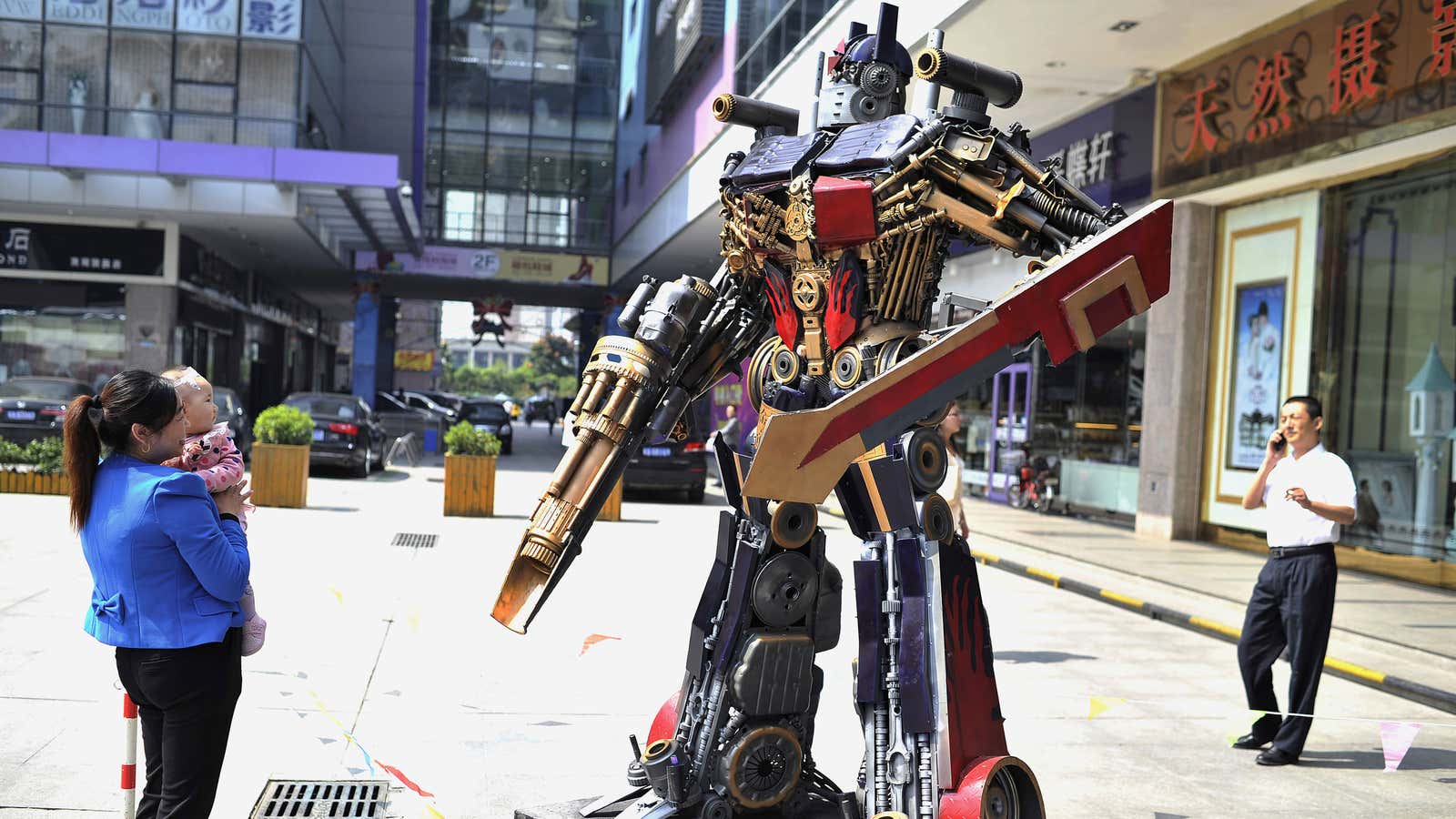Hollywood loves to hate on artificial intelligence. Plot 1 is an all-out dystopian nightmare. Plot 2 seduces until the fragile fantasy of happiness shatters as the heroic protagonist realizes that it’s rotten to the core. See Plot 1.
The New York Times’ Jayson Greene tries to explain what’s behind this generally dismal vision. Referencing Arthur C. Clark’s essay, “The Hazards of Prophecy,” which posits that it’s the failure of imagination and the failure of nerve that results in fatalistic views, Greene writes that we fail to envision a hopeful future because we imagine the worst. Beware the Terminator, Hal, NS-54s and Preston—all about power and control. The assumption seems to be that artificial intelligence will drive to our base, ruthless instincts.
But then there’s Star Wars. Humanity comes in the form of C3PO and R2D2—and Chroon-Tan B.

In 2005, Chroon-Tan B made an appearance in the public consciousness as the midwife robot in Star Wars III; Revenge of the Sith. She, because she definitely sounded like a she, crooned softly as she gently cradled the newborn twins Leia and Luke, as their mother was unceremoniously and traumatically despatched to film heaven. It was an odd little gentle interlude before the gory scenes that followed as dad Anakin was despatched limb by limb to his Darth future.
Imagine my surprise earlier this week when I found an iteration of Chroon-Tan on AngelList, the site to invest in early-stage startups. BabyBe was clearly a device created by engineers who understand the role of mothers (rather, the need for mothers) in the lives of preemie children.
Take a look here for what BabyBe does—its tag line is “soft Robotics for neonatal healthcare.”
The product is a brilliant use of data, sensors, and new materials that make the preemie child and mother’s experience so much more fulfilling, and I suspect ensures better outcomes for the life of the child. It consists of three modules:
- A Bionic mattress whose skin-like gel surface takes on the temperature and gentle shapes of the mother.
- The mother “turtle” that rests on the mother and captures her breathing rhythms and heartbeats.
- A control module that makes the connection between the turtle and mattress.
Here is a robot that has the wellbeing of mother and child squarely in mind and design. Rather than imagining the worst like Hollywood does, BabyBe’s creators imagined the best—they have FDA approval for their materials, they work not only with maternal data, but maternal feelings, they prioritize not only the child’s vitals but her emotional well-being.
There are takeaways about the future of artificial intelligence here but also on innovation overall:
- There are opportunities all around you. Hospital care has prioritized diagnostics and surgical innovation, but this is all about patient engagement and emotional wellbeing.
- Nothing should be considered sacred. The mother-preemie space has evolved, but mostly in mechanical ways that work towards infection prevention with walls and transparent dividers and carefully monitored, limited skin-to-skin interactions. By asking some key questions—what if the mother could be channeled, for example—BabyBe has established a whole new paradigm.
- Stay open to the relevance of innovations out there. The BabyBe is a wonderful amalgam of cutting edge materials (the gel), mechanics (sensors), robotics (variable movements in the supple mattress) and psychology (the emotional interplay of shape and human emotion.)
- Be bold. I can’t imagine that positing a whole new interface between mother and child was an easy argument to make but the company has done it, and crafted a robotic solution that is customer centric as well as deeply advanced.




